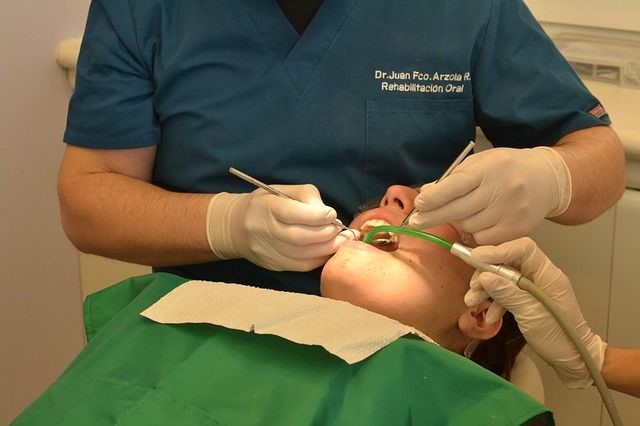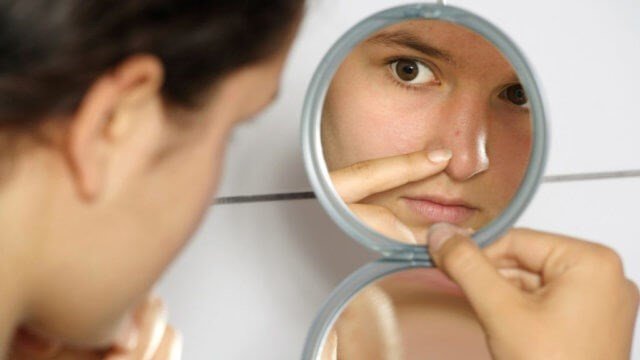
You see yourself in the mirror and now it turns out that you have realized that you have dental problems. Well, it is time for them to look for a solution that is the best and safest. The Brackets and here we tell you what they are and how they work.
Brackets is a process of a period that goes from 6, 12, 18 and 24 months to correct a dental health problem, that is, to fix your teeth and leave them beautiful, so you can wear a wonderful smile without shame and safely.
There are many types, but they are the most aesthetic a bit expensive, but it is worth putting them on to make the change happen in an invisible way without having to expose ourselves to being treated with bullying for trying to improve our external physical form.
What You Need
- Parts.
- Hold the teeth.
- Metal ring.
- Front teeth.
- Bite problems.
- Separate teeth.
- Dental diseases.
Instructions
Brackets are devices that have the particularity of carrying teeth with problems and malformations to their liger, taking into consideration that they are fixed in the mouth, that is, they cannot be removed except by the orthodontic specialist.
The orthodontist is in charge of placing the devices to patients in private consultation or any dental clinic, also belongs to a branch of dentistry that specializes in accommodating people’s teeth aesthetically with appliances or brackets.
Uses and usefulness of brackets
- The bracket. It is a kind of fixed device, which is used to hold the teeth through metal rings, wire, among others to make the teeth can become aesthetic and beautiful so that the person who needs to fix their smile improves their self-esteem. These small rings are fixed to the teeth with a special glue and pass the wire through each of them in order to tighten it to make it go to its place naturally, usually taking 12 to 24 months in the treatment process, perhaps less.
- Rigid brackets. The rigid brackets are made of a base that is glued directly on the tooth, leaving free a kind of fins or grooves that will be fixed during the process of fixing each of the teeth that need to be collected.
- With orthodontic work, the teeth will be joined perfectly, thanks to the grooves that the brackets have to pass the wire, which will do the total work of fixing the teeth to improve the smile of the person who places them.
- The pressure that is exerted. With orthodontics we work with devices called brackets that are the ones that will make the pressure, so each person improves their dental aesthetics depending on the disease they have, which often needs a treatment that takes many months of work. Both the specialist and the person must agree to reach the sessions in which it is verified if the device is taking effect, highlighting the opportunity to establish the number of sessions where the revisions will be made and tighten the device more.
- Force on the tooth. The wire that passes through the small cubes that are of different materials including porcelain or the most current ones that are sapphire, is gaining strength as the treatment sessions that the patient needs to improve his smile are given. Everything will depend on what the patient has, the movement that is given in addition to the indications for the person as well as the care he needs so that they remain in place, releasing with each squeeze a force that makes the tooth go by itself to its place.
- Orthodontist mission. The mission of the orthodontist is to make the selection of the wire and the bracket that will hold it for the person who needs the dental work, for this reason a previous session must be taken into account to know the problem presented by the patient. After those first impressions the need is made to prepare the bracket that will be placed on the patient’s teeth, choosing very carefully each of the elements that will make it up although at present and despite being expensive sapphire ones are used.
- Adhesion to the tooth. Currently the bracket adheres to the tooth with a paste made with resin and glass that needs to be fixed to the tooth tightly, so that it sticks well the device and remains immobile, resistant so that it helps in the treatment and that it does not mobilize anywhere. These devices are those that are directly attached to the tooth and will be fixed by this glue, so that the specialist can work safely by passing the wire through each of them and thus begin to perform the work of fixing the smile.
- Types of forces of the apparatus Depending on the force exerted so that the devices do the work of improving the smile, we can find three types:
- First order. Adjustments can be made horizontally because it is the force exerted between the cleft of the device and the tooth, resulting in an adjustment as the patient receives the treatment is therefore a necessity for people to attend the consultations.
- Second order. With this force that is exerted on the device, adjustment can be made vertically, turning from top to bottom the wire that is fixed from the device to the tooth and provides greater grip, causing an inclination of it.
- Third order. With this force, any problem that has to do with the position of the roots of the teeth is reduced, helping them to mobilize little by little so that the process is not so painful for the patient.
- The shape of the bracket. The force exerted on each of the devices will depend on the shape it has, selecting of course the arc that is formed when the wire is tightened, so it becomes as the treatment is performed a pressure that improves the patient’s teeth. For this reason it is important to take into consideration to talk to a specialist about the doubts of using the brackets for a defined time, since many times it can become a painful and slow process, which will have to establish patience and security.
- Colors and material. Now the brackets have become fashionable and therefore mechanisms have been established to make them look more aesthetic and colorful than before, especially when it is children who need a treatment to improve their smile. On the contrary, if they do not want them to be noticed, there are more advanced materials with which to place the devices and look little or perhaps almost invisible giving the person the possibility of feeling safe and calm in front of other people.
- Correct deformations. What the appliances do on the teeth is exert a pressure or force that will help the teeth to be corrected for malformations due to problems when children or perhaps by the use of the pacifier, among many other conditions that must be improved. The pressure must be done correctly and in the direction in which the tooth must be carried so that it reaches its place without problems and in opportunity to get the person to improve their smile in an aesthetic way so that it feels safe and beautiful.
- The orthodontist. It is the person in charge of making the treatment is done correctly so that the teeth take on a normal shape, and in turn the patient is satisfied with the final results at the end of the pressure treatment with the device. It is necessary that there is constant communication to be able to give the patient to understand the multiple options he has of material, color, costs among many other things to place the indicated bracket according to the problem that the patient needs to improve.
- Simple operation. The appliances or brackets have a simple and easy way to work with which you can give aesthetics to the patient’s smile from the moment the device begins to act on the tooth with the pressure it exerts in order to look good. It is a process that at first can hurt and bother, but by getting used to the process, you can have a normal life doing a cleaning and hygiene at all times so that there is no problem with infections or sores.
- Perfect teeth. After the treatment what is expected is that the person is happy with the final result that are perfectly alienated teeth and without separation between them that makes them look deformed and out of place when the person smiles.
So you have the option of having a more beautiful smile thanks to the wonder of having state-of-the-art technology in the placement of devices that help the teeth to go to their normal place, with different treatments for each person in addition to materials accessible to all.
Councils
- More beautiful teeth with the help of brackets as a solution to any problem.
- Adaptable treatments for each type of problem you should only consult with the specialist.
- Maintain hygiene with brushing and flossing.
- There are also invisible brackets in case you want a more discreet treatment.



